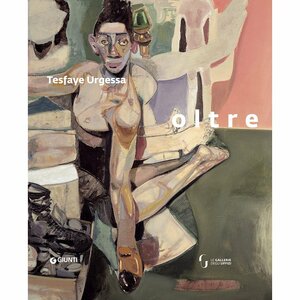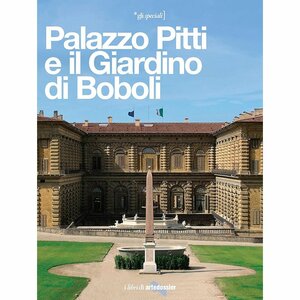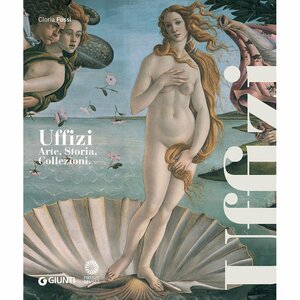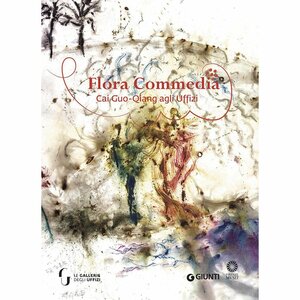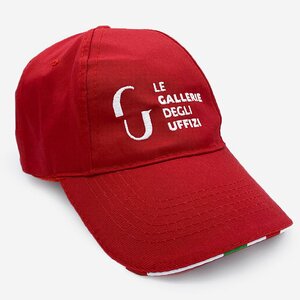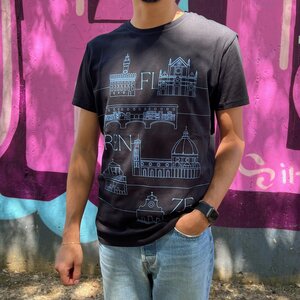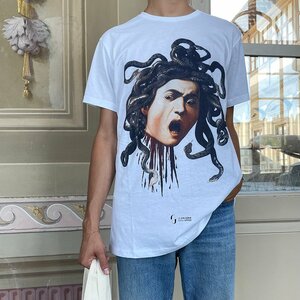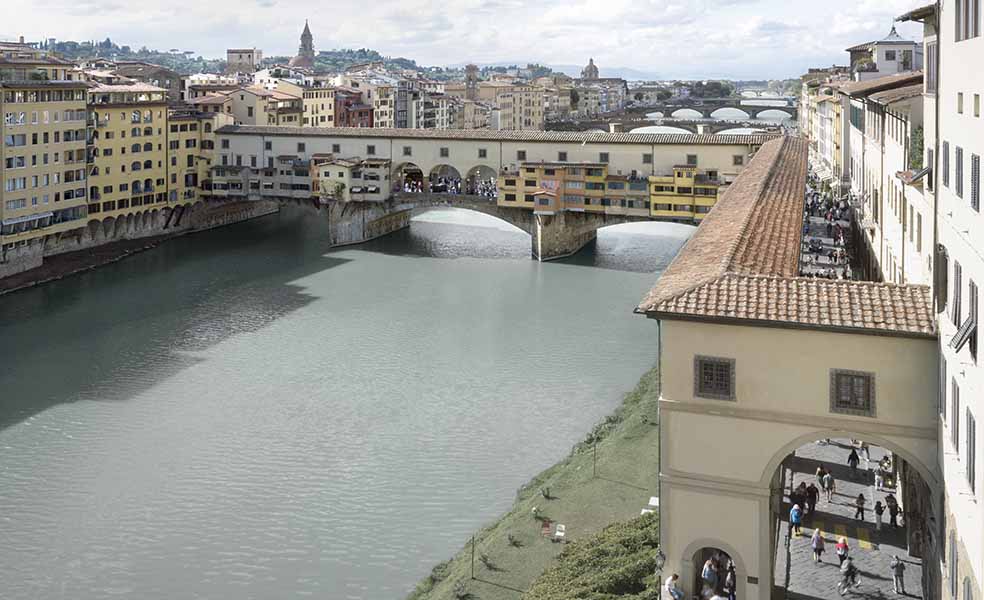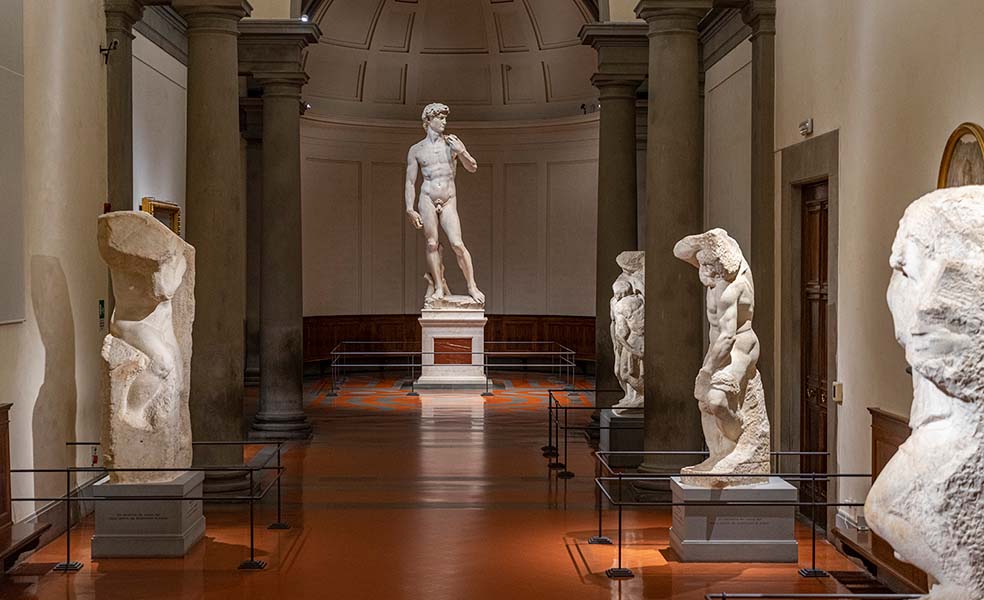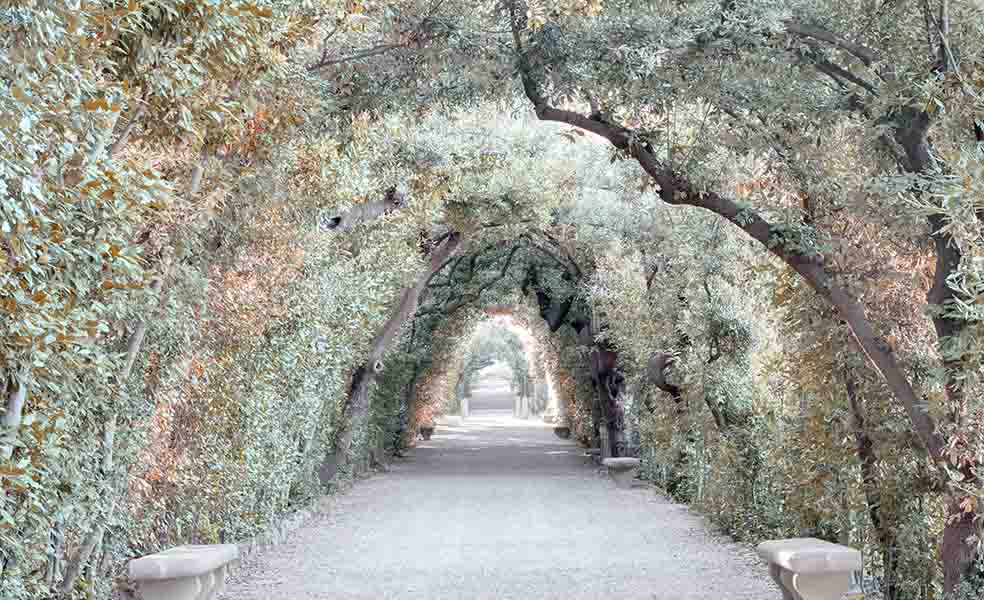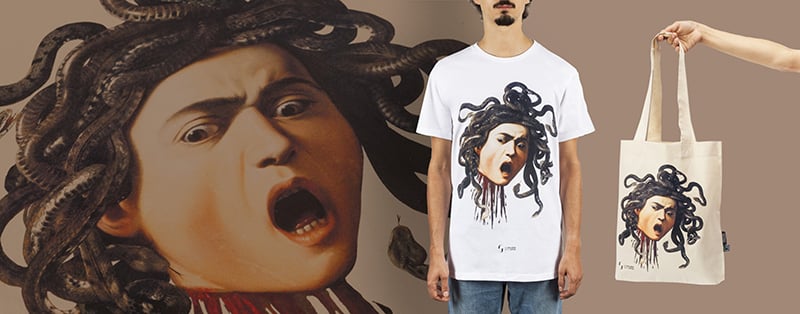Home / Museums / Gli Uffizi
Gli Uffizi
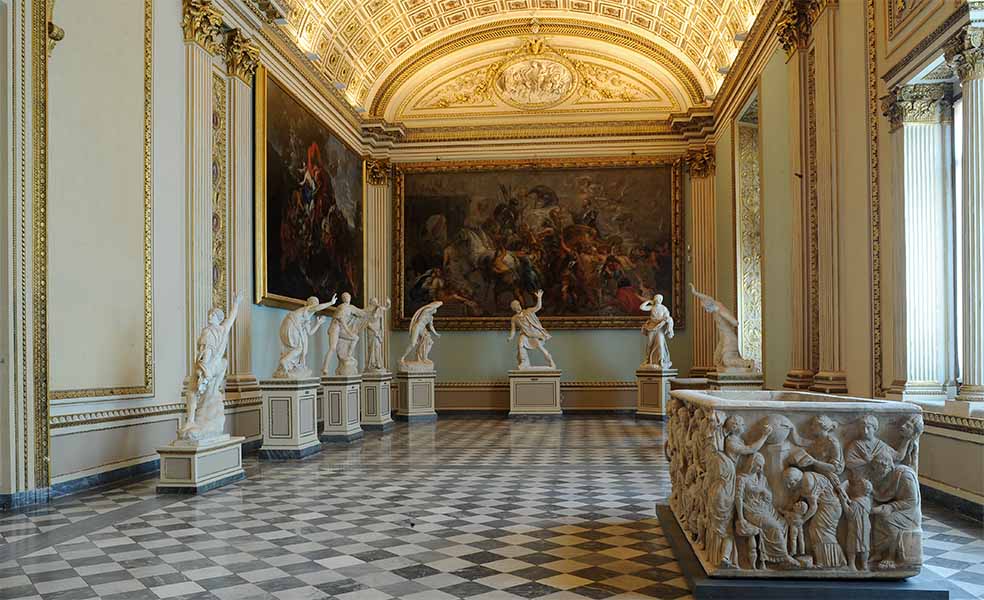
The history
In the second half of the 16th century, Grand Duke Cosimo I decided to have a building constructed next to Palazzo Vecchio with the aim of bringing together, and closely monitoring, the 13 main magistracies of Florence. The Uffizi, which owes its name precisely to the offices of these city institutions, was therefore built between 1560 and 1580 according to the design of Giorgio Vasari, the official architect of the Medici court and one of the very first art historians. The top floor, originally occupied by a loggia, was windowed and used as a private gallery by Grand Duke Francesco I in 1581 and has housed the extraordinary Medici collection ever since.
The collection
The Uffizi boasts one of the largest and most extraordinary collections of works of art, from antiquity to the modern age, and is considered one of the most important museums in the world today. Among its corridors, adorned with Greek and Roman statues from the Medici family’s collection, we find marvellous works ranging from the 1200s to the early 1800s. Today, the Gallery occupies the entire first and second floors of the historic palace and boasts numerous masterpieces by many of the artists who have made history. To name but a few, here we can admire works by Raphael, Leonardo da Vinci, Michelangelo, Piero della Francesca, Sandro Botticelli, Caravaggio, Giotto as well as Dürer, Rubens, Van der Goes and Rembrandt.
Although the original nucleus is represented by the works of the historic Medici collection, over the centuries the inventory has expanded considerably to include religious works acquired from convents and monasteries, as well as works owned by the later Lorraine dynasty. Together with the main collection, the building also houses the stupendous Contini Bonaccossi Collection, the Gabinetto dei Disegni e delle Stampe, an immense collection of graphic arts begun by Leopoldo de’ Medici in 1687, and the Vasarian Corridor, the historic covered walkway that allowed the family to travel undisturbed between Palazzo Vecchio and Palazzo Pitti and that today houses a splendid collection of self-portraits.
The artworks
Painting
Virgin and Child enthroned, surrounded by angels and saints (Ognissanti Maestà), 1300-1305 circa, Giotto (1267-1337)
Lamentation over the Dead Christ, 1303-1305 circa, Giotto di maestro Stefano, detto Giottino (documentato a Firenze nel 1368 e a Roma nel 1369)
Annunciation with St. Margaret and St. Ansanus, 1333, Simone Martini (1284 circa-1344) e Lippo Memmi (documentato dal 1317-1347)
The Duke and Duchess of Urbino Federico da Montefeltro and Battista Sforza, 1473-1475 circa, Piero della Francesca (1412-1492)
The Spring, 1480, Sandro Botticelli (1445 – 1510)
Adoration of the Magi, 1482 circa, Leonardo da Vinci (1452-1519)
Birth of Venus, 1485 circa, Sandro Botticelli (1445 – 1510)
Holy Family, known as the “Doni Tondo”, 1505-1506, Michelangelo Buonarroti (1475-1564)
Mary, Christ and the young John the Baptist, known as the “Madonna of the Goldfinch”, within febbraio 1506, Raffaello Sanzio (1483-1520)
Angel playing the lute, 1521, Giovanni Battista di Jacopo, detto Rosso Fiorentino (1495-1540)
Supper at Emmaus, 1525, Jacopo Carucci, detto il Pontormo (1494-1552)
Portrait of Eleonora di Toledo with her son Giovanni, 1545 circa, Agnolo di Cosimo Tori detto Bronzino (Firenze 1503-1572)
Bacchus, 1596-1597, Michelangelo Merisi, detto il Caravaggio (1571-1610)
Sculpture
Medici Venus, Hellenist art (Late 2nd century B. C. – Early 1st century B. C.)
Gaddi Torso, Greek art (1st century b. C.)
Wrestlers, Roman art (First century A..)
Pomona, 1941, Marini Marino (1901-1980)
The artists
Giotto (1267-1337)
Simone Martini (1284 circa-1344)
Piero della Francesca (1412-1492)
Van der Goes (1440-1482)
Sandro Botticelli (1445-1510)
Leonardo da Vinci (1452-1519)
Dürer (1471-1528)
Michelangelo Buonarroti (1475-1564)
Raffaello Sanzio (1483-1520)
Jacopo Carucci, said il Pontormo (1494-1552)
Rosso Fiorentino (1495-1540)
Agnolo di Cosimo Tori said Bronzino (Firenze 1503-1572)
Caravaggio (1571-1610)
Rubens (1577-1640)
Rembrandt (1606-1669)
Photo: Niobe room, Galleria degli Uffizi, Florence
Temporary exhibitions
Florence and Europe. Arts of the Eighteenth Century at the Uffizi
The 18th Century is back at the Uffizi Gallery: a decade later, an important exhibition revives it
The ‘Age of Enlightenment’ (and of reforms) is narrated through some 150 works set up in the ground floor rooms of the Gallery, with masterpieces by Goya, Tiepolo, Canaletto, Vigée Le Brun, Liotard, and Mengs: many never seen before, others hidden for over a decade due to the work to extend the exhibition route.
And not only that: there is also the impressive painting by the French master Pierre Subleyras, recently acquired and ‘restored live’ during the exhibition. And more: the Cabinet of Erotic Antiquities, reconstructed according to the fashion of the time, and spectacular views painted of iconic places on the Grand Tour.
Director Simone Verde: “We tell the story of a complex century through its aesthetic culture and at the same time the transformation of the Uffizi Galleries into Europe’s first modern museum”.
Masterpieces by Goya, Tiepolo, Canaletto, Le Brun, Liotard, Mengs and many other masters; spectacular views of iconic places of the Grand Tour in Italy; the monumental Mystic Marriage of St. Catherine by French painter Pierre Subleyras, restored live on display before the public’s eyes; the sensual curiosities of the Cabinet of Erotic Antiquities reconstructed according to the fashion of the Age of Enlightenment. The Uffizi Galleries bring the 18th century back to life with an impressive exhibition titled “Florence and Europe. Arts of the Eighteenth Century at the Uffizi”, curated by the director Simone Verde and the head of Eighteenth-Century Painting Alessandra Griffo, and set up from today until 28 November in the airy frescoed rooms on the ground floor of the museum. A careful selection of around 150 works, including paintings, sculptures, furniture, porcelain, prints, and a large tapestry, many exhibited for the first time in the Gallery, and others that have not been accessible for more than ten years due to the museum’s extension works.
The aim of the exhibition is to recount, through art, an era of crucial changes for Western thought, aesthetics, and taste, and also for the Uffizi itself, which, in the 18th century, was completely transformed from a dynastic treasure chest of royal collections into a modern museum, the first in the world. It was precisely at this time, in fact, that the pact established by the last Medici descendant, Anna Maria Luisa, certifying the end of the dynasty in 1737, bound the boundless store of works to Florence “for the ornament of the State”; and it was Pietro Leopoldo, Grand Duke of Tuscany, who in 1769 allowed citizens, on the feast day of Florence’s patron saint, St. John (24 June), to visit the museum freely. Structural changes intertwined with the great wave of political, cultural, and aesthetic transformations throughout Europe, which the Grand Dukes in Florence managed to intercept with the Uffizi Galleries, transforming the city and the museum into a microcosm where the new climate of the Continent could be felt.
The Director of the Uffizi Galleries, Simone Verde: “‘Florence and Europe’ aims to trace an extremely multifaceted century through its aesthetic culture, interweaving the general narrative of the context with the management of the Uffizi Galleries as Europe’s first modern museum. It’s a complex story rich in subtexts and nuances that we have constructed with patience and dedication, making works from the collection that have not been seen for many years, or have never been exhibited, available to the public”.
The curator of the 18th-century Painting of the Uffizi Galleries, Alessandra Griffo: “The works on display, besides being of great quality, have the merit of offering insights into a century that was crucial for the formation of the modern mentality, sensibility and even taste. Today, millions of people come to Florence every year, attracted by the myth of the early Renaissance: the rediscovery of this period occurred precisely during the 18th century”.
Tuesday to Sunday, 8:15 am to 6:30 pm
Last admission 5:30 pm
Every Monday; 1 January; 25 December
2-3 hours
Temporary exhibitions included in the ticket price
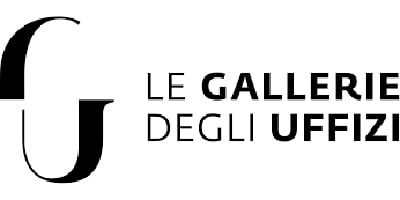
Collections
Inside the museum:




Books and guides
Merchandise
Related museums
From €12,00
The birth of the Gallery dates back to 1784, when the Grand Duke of Tuscany Pietro Leopoldo reorganised the ancient Accademia delle Arti del Disegno, founded in 1563 by Cosimo I de’ Medici, into the modern Accademia di Belle Arti. The new institution was to house a collection of ancient and modern paintings and sculptures in order to facilitate knowledge and study for the Academy’s young students.
Average visit time:
1-2 hours


